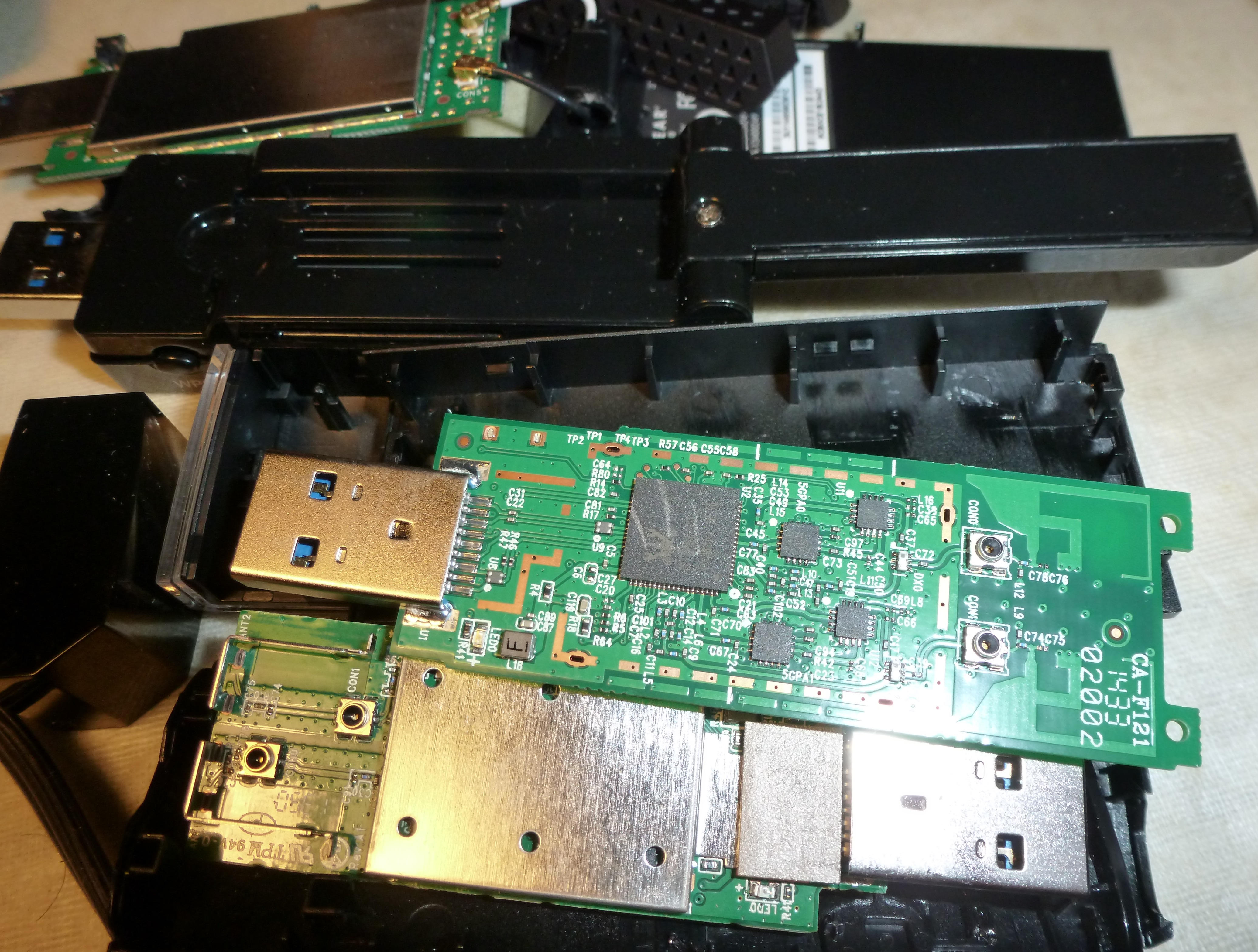Legacy Wi-Fi Adaptor Benchmarking Methodology
Tom's Hardware shows you how we test USB-attached 802.11ac wireless networking adapters.
Qualitative Testing
To further expand our performance data, the devices are set up independently on a Lenovo S400 in a residential home. In this case, the router we're using is a Netis AC1200 with a broadband cable connection. Each of the USB AC1200 Wi-Fi adapters is installed and used separately in a more typical home environment with the usual challenges that home users face: placing the router downstairs and not directly under the adapter, steel ductwork reflecting the signal in the basement and the multitude of competing wireless networks creating interference.
The point was not to redo the numbers from the Tom's Hardware lab testing, but rather to confirm the numbers generated in our office, as well as see how each wireless AC USB adapter performs under typical residential use. For example, does it stream HD video smoothly or with hiccups, does the adapter stay cool or get hot, and is the connection to the Wi-Fi network maintained or dropped? In addition, the stability and usability of the software could be assessed, as well as the out-of-box experience and setup process. Don't think this all goes smoothly in our expert hands; along the way, we lost an adapter for the initial article, as neither the lab nor this writer could get it up and running. Stay tuned, as this will be featured in a subsequent article.
Getting Inside
It is important to see what these wireless AC USB adapters are made of. While the adapters are enclosed in plastic black shells, upon opening them it becomes clear why the better-performing adapters have the higher speeds, and the answer seems dependent on the antenna solution. Getting inside of these adapters was not via some manufacturer-supplied images, but rather through old-fashioned grunt work, with an assortment of tools, including Torx screwdrivers, pliers (both lineman and needle-nose), flat-bladed screwdrivers of assorted sizes and even micro screwdrivers. Some cases came apart easier than others. The Netgear could be reconstructed, but the D-Link was essentially destroyed in the process. Be aware that this adventure can become a one-way trip to breaking the adapter!
Get Tom's Hardware's best news and in-depth reviews, straight to your inbox.

Jonas P. DeMuro is a freelance reviewer covering wireless networking hardware.
-
blackmagnum I am waiting for Apple to update their cheaper Airport Express base station to AC bandwidth. The current one gave me no proplem at all for various types and brands of wifi adaptors.Reply -
marraco I have a linksys router and a huawei. I also have some laptops with internal WiFi plaques, some USB WiFi dongles, and many phones and tablets..Reply
The huawei dongle works well with the huawei router, and so does SOME internal WIFi plaques.
On the lynksys router, MOST internal WiFi plaques work better, but not all, and not all the USB devices.
Worse, everything changes when many devices are added to the network, like a large number of laptops, phones, tablets which the family, friends and neighbors overlap, accessing my network or other networks I don't use.
At this moment IssiDer shows 2 dozen devices at reach of my PC, and I don't have any control over them.
So, I never trust Tomshardware reviews. They don't test WiFi equipment against a variety of different devices, and they don't check for interference from other networks, and under different channels.
The focus tends to be over performance in isolated and controlled state, but that says little or nothing about real world behavior.
When the air gets filled with other networks, and many different devices are connected to the router, robustness is far more valuable than pure speed.
Also, it does not matter if a specific router performs best with the non disclosed device inside the laptop used by tomshardware for benchmarking, because I may have a different WiFi plaque, and different WiFi USB dongles. -
Foxlife Please keep in mind and add to test methodology the fact that those usb dongles eat up cpu usage, in some case quite significantly vs integrated (within the laptops themselves) solutions.Reply -
tsnor Foxlife said "Please keep in mind and add to test methodology the fact that those usb dongles eat up cpu usage, in some case quite significantly vs integrated (within the laptops themselves) solutions."Reply
I'm surprised by this, given the internal wifi solutions are typically simply mini pci cards. Do you have any references ?
---
I'm looking forward to the actual test results! The test procedures look good. -
dthx Nice article. I do appreciate the transparency on your testing methods.Reply
It is just one way of testing and my experience with some brands that I'll avoid to buy at all cost often differs from your test results. For example, I always had bad luck with anything d-link makes.
But nothing's perfect in this world, especially when playing with radio waves, So although your methodology will never be 100% accurate due to possible interference from the neighbourhood and maybe the microwave oven of your kitchen, I'd rather choose your methodology (close to the real life usage) over any tests done in specialized labs with all tests executed inside a Faraday cage. -
getochkn Why does your picture not show the 2 end antenna's at 45 degree angles like you said you did?Reply -
willy481 I think most people would rather not have to buy an external WiFi dongle for their laptop or NUC - double whamy as as pay twice to lose 1 port, so are you able to test the most popular mPCIe WiFi-AC cards that laptop makers typically include, in particular the Intel Dual Band Wireless-AC 7260 and its recent replacement the 7265 ?. I realise this not as simple as testing external dongle due the fact laptops dont all use identical antenna designs - so just test in a laptop that uses a typical antenna design -better than nothing; perhaps also test the popular D54250 NUC which uses the above 7260 - think all Intel NUCs use similar box & dual internal antennaReply -
EdJulio ReplyWhy does your picture not show the 2 end antenna's at 45 degree angles like you said you did?
The cart is designed to be mobile so it got shifted around during testing. Plus we're constantly switching routers around. The pic caught the cart on an off-day. I swapped out the old pic with a new one. Thanks for the note!!!
